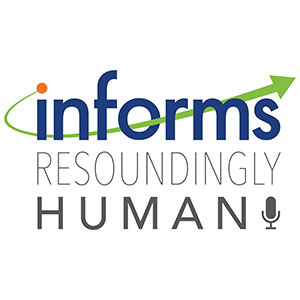
FDA Orders J&J Vaccines Made At Baltimore Emergent Plant To Be Tossed
BALTIMORE (WJZ) — The Food and Drug Administration is forcing Johnson & Johnson to throw out millions of vaccine doses made at a plant here in Baltimore.

BALTIMORE, MD, May 24, 2025 – Most anti-human trafficking efforts focus on breaking up sex sales; however, new research in the INFORMS journal Manufacturing & Service Operations Management is turning its attention to where trafficking truly begins – recruitment. Using machine learning to analyze millions of online ads, researchers at the University of Pennsylvania have uncovered patterns that link deceptive job offers to sex trafficking networks. By mapping the connections between recruitment and sales locations, the study reveals a hidden supply chain – one that can now be exposed and interrupted earlier in the trafficking process.

Drugs being explicitly developed to treat rare diseases are getting more expensive.

Old technology is behind the recent ongoing delays and cancellations at Newark Liberty International Airport, but newer technology will be an important part of the solution.
An audio journey of how data and analytics save lives, save money and solve problems.


Jeff Cohen
Chief Strategy Officer
INFORMS
Catonsville, MD
[email protected]
443-757-3565
Explore our resources for multiple topics including:

BALTIMORE (WJZ) — The Food and Drug Administration is forcing Johnson & Johnson to throw out millions of vaccine doses made at a plant here in Baltimore.

People like their Starbucks exactly so. You might have seen social media posts of those crazy orders and add-ons that people like. But people aren't able to get what they want how they want it right now. There's a big ingredients shortage along with breakfast foods and cake pops and even cups, lids and straws. Anna Nagurney joins us. She's a University of Massachusetts-Amherst operations management professor. Bryant Simon is a history professor at Temple University and author of “Everything But the Coffee: Learning About America From Starbucks.”

We're just days away from California's grand reopening. Almost everything goes back to normal on June 15th. That means you can rip off your masks just about everywhere you go if you're fully vaccinated. But it might be different when you're at work. Cal OSHA once again changed its mask rules and there's still plenty of confusion. Just because you'll be able to go places without a mask, will you? It might take some time for people to adjust. A murder mystery has been solved 65 years later. It might be the oldest cold case ever to be figured out using DNA and geneaology. A new poll shows millions of Americans feel they don't have anyone they can really trust. More and more people now are falling victim to lottery and sweepstakes scams. Is it that scammers are getting smarter or are people are just more willing to believe? Have you heard of shrinkflation? It's hitting grocery stores. And if you're one of those super picky Starbucks customers ... double pump kid temps extra whip...that kind of a thing....well, sorry. There's a big ingredient shortage.

As the 11,000 athletes and the numerous support staff that flock with them descend next month on Tokyo for the Olympic Games, the unknowns — and the risk those unknowns pose — are still prevalent.

(The Center Square) – A USA TODAY article dives into Michigan’s vaccine focus on “equity” instead of protecting those most vulnerable to COVID-19. A surge of COVID-19 cases late in the pandemic killed 2,500 people.

OR/MS Today is the INFORMS member magazine that shares the latest research and best practices in operations research, analytics and the management sciences.
Access OR/MS Today Magazine
Analytics magazine showcases articles and research reports based on big data, AI, machine learning, data analytics and other new-age technologies.
Access Analytics Magazine